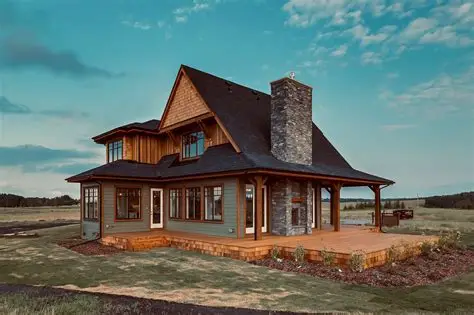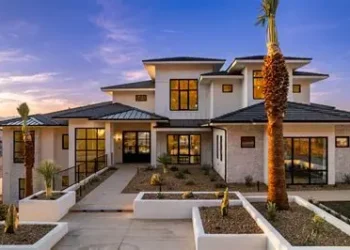Embark on a journey into the world of natural wood siding houses, where the beauty of wood meets the functionality of home exteriors. Discover the charm and elegance that natural wood siding can bring to any residence, creating a warm and inviting atmosphere that stands the test of time.
Delve deeper into the nuances of this traditional yet versatile siding option, as we explore its characteristics, installation process, environmental impact, and design considerations.
. Wood is a biodegradable material, which means it can easily decompose without releasing harmful chemicals into the environment. This makes it a more eco-friendly choice compared to synthetic siding materials.
Characteristics of Natural Wood Siding
Natural wood siding offers a warm and inviting appearance that adds a touch of rustic charm to any home. The texture of wood siding can vary depending on the type of wood used, ranging from smooth to rough.Types of Wood for Siding
- Cedar: Known for its durability and natural resistance to insects and decay, cedar is a popular choice for wood siding.
- Pine: Affordable and readily available, pine siding can be easily stained or painted to achieve the desired look.
- Redwood: With its rich color and natural resistance to rot, redwood siding is a high-end option for homeowners seeking a luxurious finish.
Benefits of Natural Wood Siding
- Natural Beauty: The unique grain patterns and colors of natural wood siding create a timeless and elegant look for any home.
- Environmentally Friendly: Wood is a renewable resource, making it a sustainable choice for siding materials.
- Insulation: Wood siding provides natural insulation, helping to regulate the temperature inside the home and reduce energy costs.
Installation and Maintenance
When it comes to installing natural wood siding on a house, there are several important steps to follow to ensure a successful and long-lasting result. Additionally, proper maintenance is crucial to preserve the beauty and integrity of the wood over time.Installation of Natural Wood Siding
- Prepare the surface: Ensure that the surface where the wood siding will be installed is clean, dry, and free of any debris or existing damage.
- Choose the right type of wood: Select a high-quality wood species that is suitable for exterior use and can withstand the elements.
- Measure and cut the siding: Accurately measure and cut the wood siding pieces to fit the dimensions of the house, taking care to leave room for expansion and contraction.
- Install the siding: Start from the bottom and work your way up, ensuring each piece is properly aligned and securely attached to the house.
- Seal the seams: Apply a high-quality sealant to the seams between the wood siding pieces to prevent water infiltration and protect against moisture damage.
Maintenance Tips for Natural Wood Siding
- Inspect regularly: Check the wood siding periodically for any signs of damage, rot, or pest infestation.
- Clean gently: Use a mild detergent and water to clean the wood siding, avoiding harsh chemicals or abrasive materials that could damage the wood.
- Apply sealant and stain: Regularly reapply sealant and stain to protect the wood from moisture, UV rays, and other environmental factors.
- Trim vegetation: Keep plants and trees trimmed back from the wood siding to prevent moisture buildup and reduce the risk of damage.
Proper sealing and staining are essential for natural wood siding to protect it from moisture, UV rays, and other environmental factors that can cause damage and deterioration over time.
Environmental Impact
Natural wood siding is considered a sustainable option for homes due to its renewable natureSustainability of Using Natural Wood Siding
Natural wood siding comes from trees that are responsibly harvested and replanted, making it a renewable resource. This sustainable practice ensures that forests are not depleted and helps in maintaining the ecological balance of the environment.Comparison with Other Siding Materials
When compared to other siding materials like vinyl or aluminum, natural wood siding has a lower carbon footprint. The production process of wood siding involves less energy consumption and emits fewer greenhouse gases, making it a more environmentally friendly option.Contribution to Eco-Friendly Homes
Natural wood siding helps in creating a healthier indoor environment by regulating humidity levels and improving air quality. Wood also acts as a natural insulator, reducing the energy consumption needed for heating and cooling homes. Additionally, the longevity of wood siding reduces the need for frequent replacements, further minimizing waste and environmental impact.Design and Style Considerations
When it comes to enhancing the overall look of a house, natural wood siding can play a crucial role in boosting curb appeal. Its warm and inviting appearance adds a touch of elegance and charm to any home.Architectural Styles
There are several architectural styles that complement natural wood siding beautifully. Some examples include:- Craftsman: Known for its emphasis on natural materials and handcrafted details, the Craftsman style pairs perfectly with the warmth of natural wood siding.
- Cape Cod: This traditional style often features wood shingle siding, making natural wood siding a seamless fit for a classic Cape Cod home.
- Contemporary: For a modern look, natural wood siding can be used to add texture and visual interest to a sleek, contemporary design.
Color Options and Finishes
When it comes to natural wood siding, there is a wide range of color options and finishes available to suit different preferences and styles. Some popular choices include:- Natural Cedar: Retaining the wood's natural color, cedar siding offers a classic and timeless look.
- Stained Finish: Staining wood siding allows you to customize the color while still showcasing the natural grain of the wood.
- Painted Finish: Opting for painted wood siding gives you the flexibility to choose from a vast array of colors to match your home's exterior palette.













